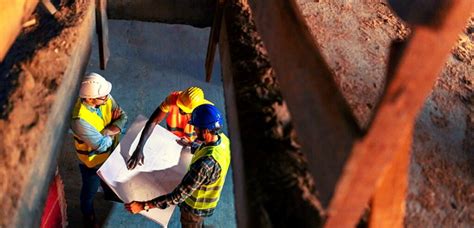How to Bid Concrete Jobs and Achieve Your Business Goals
Winning concrete jobs requires more than just low prices; it demands a strategic approach to bidding that ensures profitability while achieving your business objectives. This comprehensive guide will walk you through the process, from initial assessment to securing the contract, helping you build a thriving concrete business.
Understanding Your Business Goals
Before diving into the specifics of bidding, define your business goals. What are you aiming for? Increased revenue? Expanding your service area? Improving profit margins? Clearly articulated goals provide a framework for your bidding strategy. For example, if your goal is to increase market share, you might be willing to accept lower margins on certain projects to gain experience and visibility. If profitability is paramount, you'll need a more conservative bidding approach.
Accurately Estimating Material Costs
Accurate cost estimation is crucial for successful bidding. This involves:
- Detailed Plans Review: Carefully review the project blueprints, specifications, and scope of work. Identify all materials needed: concrete mix design (strength, slump, etc.), reinforcing steel (rebar), formwork, and any admixtures.
- Material Price Fluctuation: Account for potential price changes in materials. Use current price lists from your suppliers and consider including a contingency for price increases.
- Waste Factor: Always factor in material waste. Concrete has a significant waste factor, depending on the project's complexity.
- Delivery Costs: Include transportation costs for delivering materials to the job site. This includes the cost of fuel, truck rental or ownership, and driver labor.
Calculating Labor Costs
Labor costs are another major expense. To accurately estimate:
- Crew Size and Skill: Determine the number of workers needed, their skill levels, and the hours required for each phase of the project.
- Wage Rates: Use current wage rates for your region and account for any benefits or payroll taxes.
- Productivity: Estimate the crew's productivity based on past experience and project complexity. Consider potential weather delays or other unforeseen circumstances.
- Supervision: Include the cost of supervision, if applicable.
Determining Equipment Costs
Equipment costs can significantly impact your bid. This includes:
- Ownership vs. Rental: Analyze the costs of owning and maintaining your equipment versus renting it. Consider factors like depreciation, maintenance, repairs, and fuel consumption.
- Transportation Costs: Account for the cost of transporting equipment to and from the job site.
- Downtime: Consider potential downtime due to equipment malfunctions or repairs.
Adding Overhead and Profit Margin
Once you've accounted for material, labor, and equipment costs, add your overhead costs. These include:
- Office Expenses: Rent, utilities, insurance, and administrative salaries.
- Marketing and Sales: Costs associated with attracting new clients.
- Insurance and Bonds: Liability insurance, workers' compensation, and surety bonds.
Finally, add your desired profit margin. This should be sufficient to cover your business goals and provide a reasonable return on investment. Don't undersell yourself!
Addressing Potential Risks and Contingencies
Unforeseen circumstances can impact a project. Build contingencies into your bid to address potential risks:
- Weather Delays: Include a contingency for potential weather-related delays.
- Unexpected Site Conditions: Account for the possibility of encountering unforeseen site conditions that could increase costs (e.g., rock removal).
- Material Shortages: Build a buffer for potential material shortages or price increases.
Preparing Your Bid Document
Your bid document should be clear, concise, and professional. It should include:
- Project Description: A clear and concise description of the project scope.
- Detailed Breakdown of Costs: A detailed breakdown of all costs, including materials, labor, equipment, overhead, and profit.
- Payment Schedule: A proposed payment schedule.
- Project Timeline: A realistic project timeline.
- Insurance and Bonding Information: Proof of insurance and bonding.
- References: Include references from previous projects.
Submitting Your Bid and Negotiating
Submit your bid by the deadline specified in the request for proposal. Be prepared to negotiate if your bid is under consideration. This may involve discussing pricing or project scope.
Frequently Asked Questions
How do I price concrete per cubic yard?
Pricing concrete per cubic yard requires accurate calculations of material quantities, labor hours, and equipment use for a standard cubic yard of concrete. Research local market rates to establish a competitive price while ensuring profitability.
What is a reasonable profit margin for concrete work?
A reasonable profit margin for concrete work varies depending on factors like project size, complexity, and market conditions. However, a range of 10-20% is generally considered acceptable, but this should be adjusted based on your specific business goals and risk assessment.
How can I improve my bidding accuracy?
Improving bidding accuracy comes from experience, detailed planning, and consistent record-keeping. Track your actual costs on past projects to refine your estimations, and utilize project management software to streamline the process.
By following these steps, you can create accurate and competitive bids that help you win concrete jobs and achieve your business goals. Remember, consistent and strategic bidding is key to long-term success in the concrete industry.

